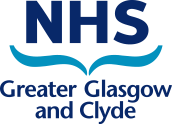3.2. Corticosteroids
The British Thoracic Society and the Scottish Intercollegiate Guidelines Network jointly produce the British Guideline on the Management of Asthma which is available from the SIGN website (www.sign.ac.uk). The GGC prescribing resources page contains useful resources for prescribing inhaler devices including device guides and patient information leaflets.
3.2.1. Single agent inhaled devices
Patients receiving inhaled corticosteroids for asthma should have their treatment reviewed regularly with those patients on a high-dose inhaled steroid being considered for step-down if appropriate. Patients receiving >1000 micrograms of 'traditional' beclometasone daily (or equivalent, e.g. fluticasone 500 microgram or budesonide 800 microgram) should be issued with a steroid card.
The British Thoracic Society and the Scottish Intercollegiate Guidelines Network jointly produce the British Guideline on the Management of Asthma which is available from the SIGN website (www.sign.ac.uk). The GGC prescribing resources page contains useful resources for prescribing inhaler devices including device guides and patient information leaflets.
Prescribing Notes:
Preferred brands and devices:
- Beclometasone Easyhaler® (DPI)
- Clenil Modulite® (MDI)
To prevent confusion, prescribe inhaler devices by brand name. Different brands of beclometasone CFC-free inhalers are not equipotent and should be prescribed by brand name for safety reasons.
Prescribing Notes:
To prevent confusion, prescribe inhaler devices by brand name. Different brands of beclometasone CFC-free inhalers are not equipotent and should be prescribed by brand name for safety reasons.
Prescribing Notes:
Preferred brand and device:
- Pulmicort Turbohaler®
To prevent confusion, prescribe inhaler devices by brand name.
3.2.2. Combination inhaled devices
In asthma, patients receiving inhaled corticosteroids should have their treatment reviewed regularly with those patients on a high-dose inhaled steroid being considered for step-down if appropriate. Patients receiving >1000 micrograms of 'traditional' beclometasone daily (or equivalent, e.g. fluticasone 500 microgram or budesonide 800 microgram) should be issued with a steroid card.
The British Thoracic Society and the Scottish Intercollegiate Guidelines Network jointly produce the British Guideline on the Management of Asthma which is available from the SIGN website (www.sign.ac.uk). The GGC prescribing resources page contains useful resources for prescribing inhaler devices including device guides and patient information leaflets.
Restrictions:
Asthma: Refer to NHSGGC Inhaler Device Guide for place in therapy in adults.
COPD: Use of the 100/6 strength for the treatment of severe COPD is restricted to use in accordance with the current NHSGGC COPD Inhaler Device Guide.
Prescribing Notes:
Preferred brand and devices:
- Fostair NEXTHaler® (dry powder inhaler)
- Luforbec® (aerosol inhaler)
To prevent confusion, prescribe inhaler devices by brand name.
In selected adult patients with asthma, the use of beclometasone and formoterol 100/6 in a single inhaler as rescue medication instead of a short-acting beta2 agonist, in addition to its regular use as controller therapy, has been shown to be an effective treatment regime.
Fostair 200/6 and Luforbec 200/6 strength aerosol inhaler are not currently licensed for use in COPD or for the maintenance and relief use in asthma (as described in the paragraph above).
Restrictions:
Restricted for use in asthma patients according to the BTS/SIGN asthma guidelines.
Prescribing Notes:
Preferred brands and devices:
- DuoResp® Spiromax (dry powder inhaler)
- Fobumix® Easyhaler (dry powder inhaler
- Symbicort® Turbohaler (dry powder inhaler)
To prevent confusion, prescribe inhaler devices by brand name.
Non-Formulary indication:
Treatment of patients with chronic obstructive pulmonary disease (COPD) with forced expiratory volume in 1 second (FEV1) 50% to 70% predicted normal (post bronchodilator) and an exacerbation history despite regular bronchodilator therapy.
Restrictions:
COPD: The symptomatic treatment of adults with chronic obstructive pulmonary disease (COPD) with an exacerbation history despite regular bronchodilator therapy is restricted to use in patients with severe COPD (FEV1 <50% predicted normal).
Asthma: The regular treatment of asthma in adults and adolescents aged 12 years and older where use of a combination medicinal product (long-acting beta2-agonist and inhaled corticosteroid) is appropriate in patients not adequately controlled with inhaled corticosteroids and 'as needed' inhaled short-acting beta2-agonists
Prescribing Notes:
To prevent confusion, prescribe inhaler devices by brand name.
- Fluticasone furoate is a high-potency inhaled steroid (with a dose of 92 micrograms once daily broadly equivalent to 250 micrograms twice daily of fluticasone propionate). When used for asthma, due consideration for the likelihood of step-down should be given prior to initiation as there are no available step-down options containing a dose lower than 92 microgram of fluticasone furoate.
- Prescribers should be aware that the fluticasone furoate contained in this preparation is not equivalent in terms of dosing to fluticasone propionate.
- The Summary of product characteristics for this preparation advises on dose equivalence in section 4.2.
- The name of this device may inadvertently lead patients to confuse it as a 'reliever'. Careful counselling to avoid overuse is advised.
- Only the 92/22 microgram strength is licensed for COPD
Restrictions:
COPD: Restricted to severe COPD (FEV1 <50% predicted normal)
Prescribing Notes:
Formulary devices and indications:
- Trimbow NEXThaler® (dry powder inhaler): COPD
- Trimbow® (aerosol inhaler 87 microgram/5 microgram/9 microgram): asthma and COPD
- Trimbow® (aerosol inhaler 172 microgram/5 microgram/9 microgram): asthma
To prevent confusion, prescribe inhaler devices by brand name.
Restrictions:
Restricted to severe COPD (FEV1 <50% predicted normal)
Prescribing Notes:
To prevent confusion, prescribe inhaler devices by brand name.
Restrictions:
Restricted to use in patients with severe COPD (forced expiratory volume in one second [FEV1] less
than 50% predicted normal).
Prescribing Notes:
To prevent confusion, prescribe inhaler devices by brand name.

Restrictions:
Restricted to initiation by a specialist based in secondary care.
Prescribing Notes:
To prevent confusion, prescribe inhaler devices by brand name.
3.2.3. Systemic corticosteroids for acute exacerbations of asthma and COPD
Restrictions:
Excludes 25mg tablets
Prescribing Notes:
The use of enteric-coated (EC) prednisolone does not offer significant benefit over the regular tablets. Plain prednisolone tablets should be used in preference where available.
Please note that dispersible prednisolone tablets are significantly more expensive than standard oral tablets or the oral solution [December 2024]


